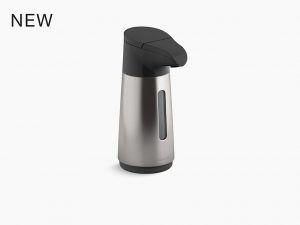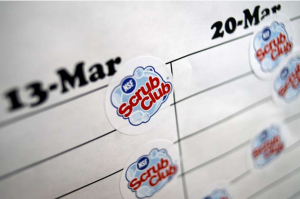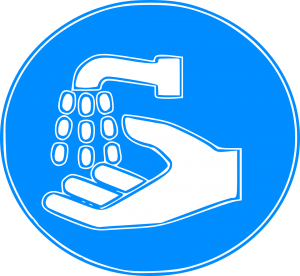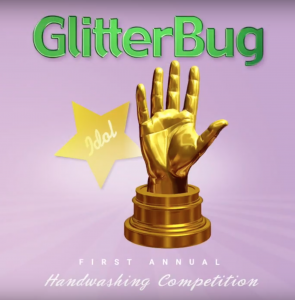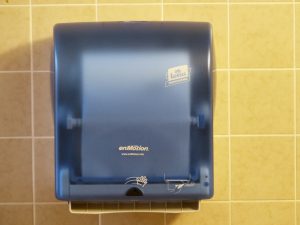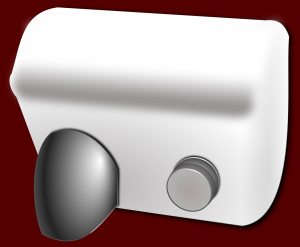We at Brevis are natural proponents of tools used to increase the effectiveness of hand hygiene. Our GlitterBug Gel and GlitterBug Potion, together with our disclosure centers, do an excellent job of teaching proper handwashing technique and effectiveness. Our Hand and Nail Scrub Brush is ideal for hard-to-clean areas. We even have a Handwash Instruction Manual for quick reference.
Kohler, a global leader in kitchen and bath design and technology, has recently launched their “first-to-market” Touchless Soap Dispenser. In addition to a customizable setting selection for liquid or foaming soap, the dispenser features an LED light which illuminates for 20 seconds– the amount of time the CDC recommends for hand washing– before turning off.
A sensor on the dispenser preserves battery life and prevents soap from being wasted. A rubber ring on the bottom helps stabilize the dispenser on the countertop while also protecting the battery compartment. An anti-drip spout prevents soap from dripping onto the counter. It’s no wonder the Touchless Soap Dispenser is a winner of the 2017 Global Innovations Award, honoring housewares for product design excellence.
Brevis welcomes innovative handwashing products and applauds Kohler for It’s thoughtfully designed Touchless Soap Dispenser. Brevis products and soap working hand-in-hand to prevent the spread of disease.
Sources:
http://www.prweb.com/releases/2017/04/prweb14206504.htm
https://www.cdc.gov/features/handwashing/
https://www.brevis.com/products/139587/gbgel-glitterbug-gel-bottle?ref=/glitterbug/supplies

